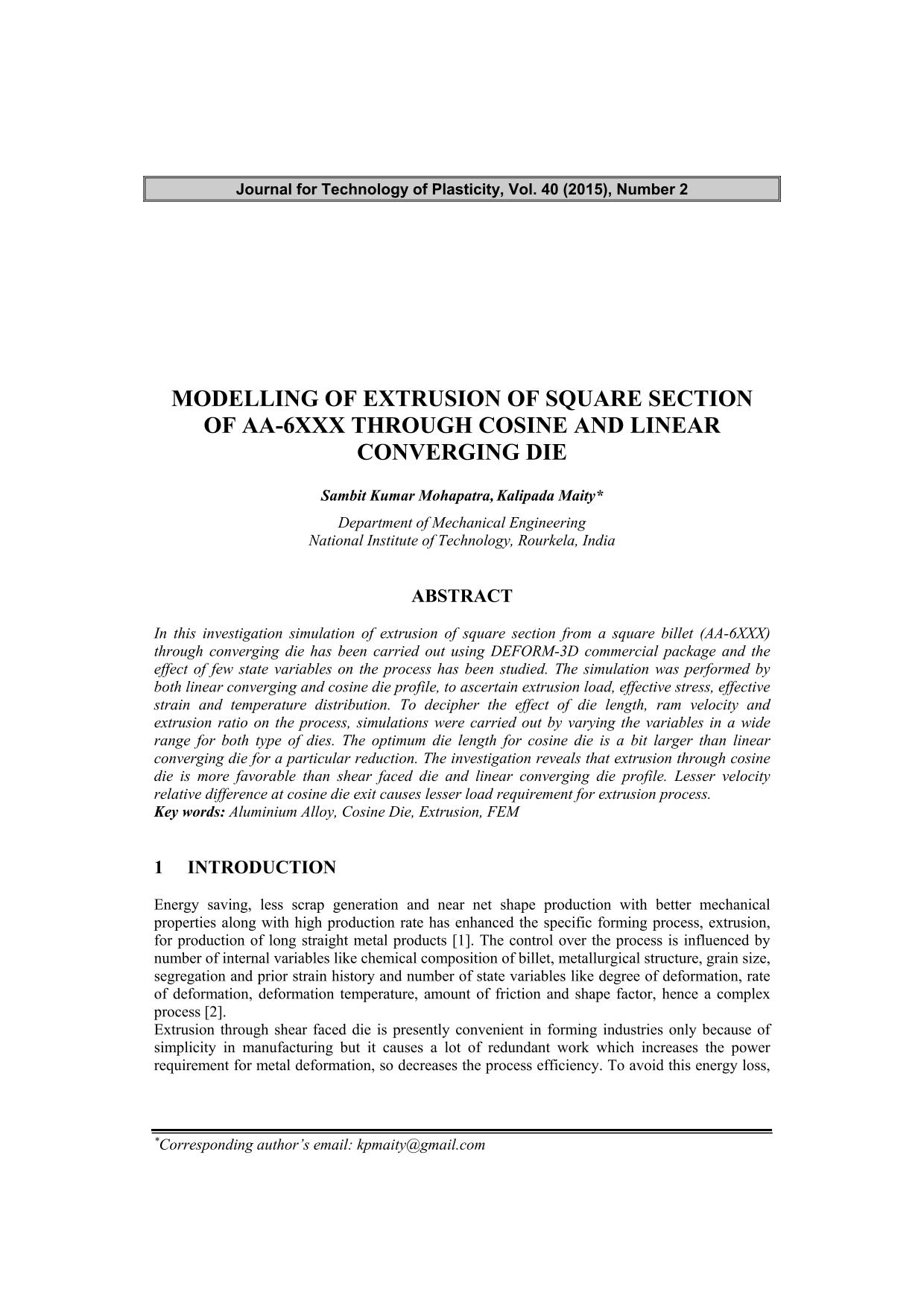Modelling of extrusion of square section of AA-6xxx through cosine and linear converging die

Published 2015-12-21
abstract views: 17 // Full text article (PDF): 0
Keywords
- Aluminium Alloy,
- Cosine Die,
- Extrusion,
- FEM
How to Cite

This work is licensed under a Creative Commons Attribution 4.0 International License.
Abstract
In this investigation simulation of extrusion of square section from a square billet (AA-6XXX) through converging die has been carried out using DEFORM-3D commercial package and the effect of few state variables on the process has been studied. The simulation was performed by both linear converging and cosine die profile, to ascertain extrusion load, effective stress, effective strain and temperature distribution. To decipher the effect of die length, ram velocity and extrusion ratio on the process, simulations were carried out by varying the variables in a wide range for both type of dies. The optimum die length for cosine die is a bit larger than linear converging die for a particular reduction. The investigation reveals that extrusion through cosine die is more favorable than shear faced die and linear converging die profile. Lesser velocity relative difference at cosine die exit causes lesser load requirement for extrusion process

